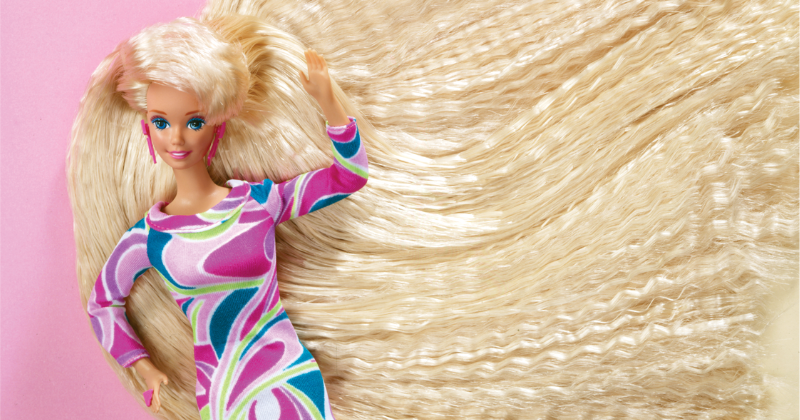For thirty-five years, I was at the center of the Barbie universe as a member of Mattel’s design team. It wasn’t a career I had ever envisioned when I was younger, but from that moment in 1962 when I first read Mattel’s advertisement in Women’s Wear Daily, I saw my future, and it thrilled me.
Perhaps that’s because Barbie’s life was the polar opposite of my own: she was the ultimate California girl, while I grew up in Minneapolis, where the winters were gray and seemingly endless. Barbie could take on any profession she desired—she was an astronaut in 1965, four years before the Apollo 11 moon landing—but when I was thinking about a career in the late 1950s, the options available to women largely focused on the “expected” five: nurse, teacher, secretary, shopgirl, and seamstress. I always knew that I wanted more.
One Sunday while reading the newspaper, I spied an ad for a seminar highlighting jobs in the fashion industry. I put on my best interview clothes and my bravest face, and I didn’t tell anyone where I was going. The first speaker was a member of the Fashion Group International, Inc., who discussed the fashion design program at the Minneapolis School of Art. She put two words together that I had never heard of as a vocation: fashion designer. It was as though someone had turned on a light. Before leaving the seminar, I filled out an application—and when I returned home, I still didn’t tell anyone.
I watched the mailbox every day for weeks until an envelope with my name on it finally arrived: I had been accepted! That feeling of wanting more suddenly no longer made me feel restless; instead, it was exhilarating.
Today the Minneapolis School of Art is known as the Minneapolis College of Art and Design, and in the early 1950s, I was among just 250 students, many of whom were World War II veterans studying on the GI Bill. On most days, I was able to catch a ride with a former GI who decided to study sculpture after he had worked on the restoration of Mount Rushmore. And instead of the sweater-and-skirt combination that had practically become my high school uniform, in college I wore blue jeans most days—just like the guys.
At the beginning of my senior year of college, a notice was posted that the application process was about to kick off for Mademoiselle magazine’s annual guest-editor contest. While Vogue was considered the epitome of high fashion, Mademoiselle focused more on the lifestyle of smart, independent young women; contributing authors included Joyce Carol Oates and Truman Capote. Meanwhile, the guest-editor program was truly prestigious, with an alumni list that included Sylvia Plath and, from my year, Joan Didion.
Entrants submitted four essays over the course of their senior year; but with more than thirty-seven thousand applicants and only twenty guest editor spaces, did I even have a chance? My first essay won a ten-dollar prize, and I allowed myself to hope. In early May, just prior to graduation, the telegram arrived: “We are delighted to tell you that you have been chosen as a 1955 Guest Editor.”
In June 1955, instead of walking across the stage to receive my diploma, I’d checked into the legendary Barbizon Hotel for Women in New York City, living and working in a city that was overwhelming, but exciting too. While walking on Fifth Avenue, I found myself always looking up—at the green mansard rooftops of the Pierre and the Plaza, or the art deco edifices of Bonwit Teller and Tiffany & Co.
Our class of twenty talented “mademoiselles” was nothing less than a dreamlike experience. We were invited everywhere: to the home of the famed cosmetics mogul Helena Rubinstein, who devoted an entire room of her penthouse apartment to Salvador Dalí paintings, and to stand at the podium in the General Assembly room at the United Nations, which had opened its headquarters on Manhattan’s East Side just a few years before. We wore our best formals while dancing with West Point cadets in the ballroom on the rooftop of the St. Regis Hotel. And everywhere we went, we were photographed as though we were debutantes or celebrities. It was about as far from Minneapolis as you could get.
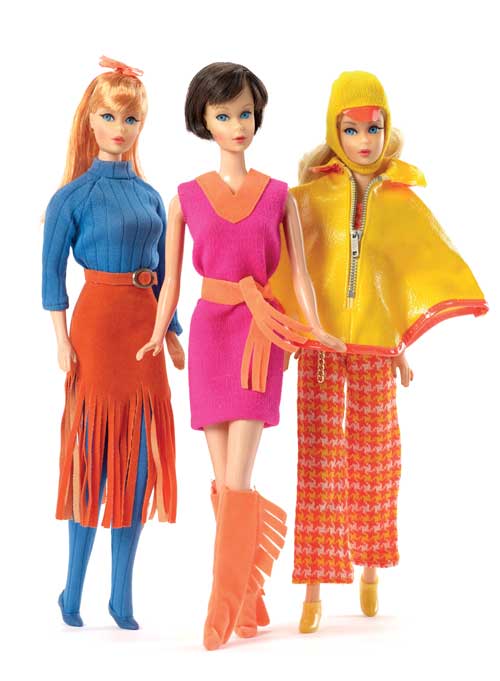 Mattel
Mattel
Even the work was tinged with glamor. We each had to produce an article for publication, and I asked the magazine’s fashion editor, Kay Silver, if I could interview Pauline Trigère, whose work I appreciated for its combination of innovative construction and clean, chic lines. To my utter delight, Kay granted my wish, and soon enough I was standing with Pauline Trigère in her workroom in the Garment District. It was my first look at a professional design studio, with its large tables for pattern cutting, mannequins for draping (Miss Trigère’s preferred design process), and a live-fit model on standby. I was hooked.
During our interview, Miss Trigère (as I always called her) dispensed terrific advice that I still follow: a pretty sketch is only the beginning; a good fashion designer also considers the execution of that design and how the personality of the fabric will play a role. No one element is more important than the others. She also encouraged me to, above all, be true to myself. Throughout my thirty-five years designing for Barbie, I never strayed from this philosophy.
After my month in New York, I spent a few years designing first children’s clothing, then “misses sportswear” (the designation for teenage girls then).
When I saw the ad in Women’s Wear Daily in November 1962, it didn’t mention Barbie or Mattel; rather, it was a blind ad for a fashion designer stylist, yet I read between the lines and was able to discern both the company and product. Perhaps best of all, two words jumped out at me: Los Angeles. Sunny California suddenly seemed like the perfect change from Milwaukee, and working on Barbie, already the world’s most popular toy, seemed like an irresistible idea. I sent my résumé for consideration, but didn’t receive a response.
In the meantime, thoughts of Los Angeles continued to beckon. One day, in a pure leap of faith, I decided a move to California was exactly the change I was seeking. I didn’t have a job, but even if Mattel didn’t hire me, I knew Los Angeles was a hub for fashion manufacturers.
Before I left Milwaukee, I had asked for my mail to be forwarded, but still no word from the company advertising for a fashion designer-stylist. Then one day in 1963, I was sitting at my kitchen table in Los Angeles, reading a trade paper, and I couldn’t believe my eyes: “Barbie Needs a Fashion Designer-Stylist.” The ad listed all the same requirements as the previous blind ad, but this time it was no secret: Mattel needed someone to design for Barbie. Thrilled to learn more about the position, and that it hadn’t been filled, I applied the same day.
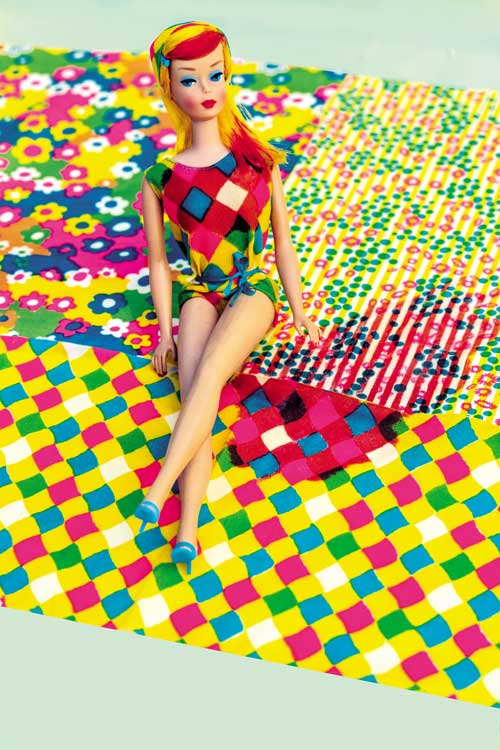 Mattel
Mattel
And soon enough, a response. Actually, make that two responses: At roughly the same time Mattel replied to my submission to the ad in the California paper, my forwarded mail from Milwaukee also arrived, and there was Mattel’s reply to the résumé I had sent after seeing the blind ad in Women’s Wear Daily. Amazingly, both letters included the same request: Could I come in for an interview on April 12 at 11:00 a.m.?
This was fate, I thought. My decision to move to Los Angeles had paid off.
On Friday, April 12, 1963, just before 11:00 a.m., I arrived for my interview at Mattel’s California headquarters. I was determined to get this job.
I had two weeks to create a set of test fashions; the dolls should be dressed in my finished designs.My interview with Jerry Fire of Mattel’s human resources department was quite brief. He had heard the story of my dueling résumé submissions, and during this process Mattel evidently had decided I was more than qualified for the job. There were just two hurdles to get past: from that same desk drawer, Jerry took out two Barbie dolls, one blond and the other brunette, both sporting the same bubble-cut hairstyle. With them, he handed me a packet of instructions. I had two weeks to create a set of test fashions; the dolls should be dressed in my finished designs, and I needed to present patterns and sketches. “And be sure to keep track of your time, because we’ll pay you for it,” Jerry added.
Back in my apartment, I put the dolls on my kitchen table and spread out the instructions. The first challenge was how different it would be to design for a doll instead of designing for a child or young woman. Barbie had been created on a onesixth scale of the female form, and while the math for creating patterns was easy enough, finding prints suitable for her smaller size could be difficult; even the smallest, most delicate flower on a child’s dress would seem gigantic on an eleven-and-a-half-inch doll. I also had to take into consideration the perception of Barbie as the quintessential California girl. Whatever I designed needed to evoke that ideal.
Completing the test fashions was merely the first hurdle. My follow-up meeting two weeks later was with the woman who already had become a bona fide legend in the history of Barbie. Charlotte Johnson had been a freelance fashion designer who also taught at what later became known as the California Institute of Arts.
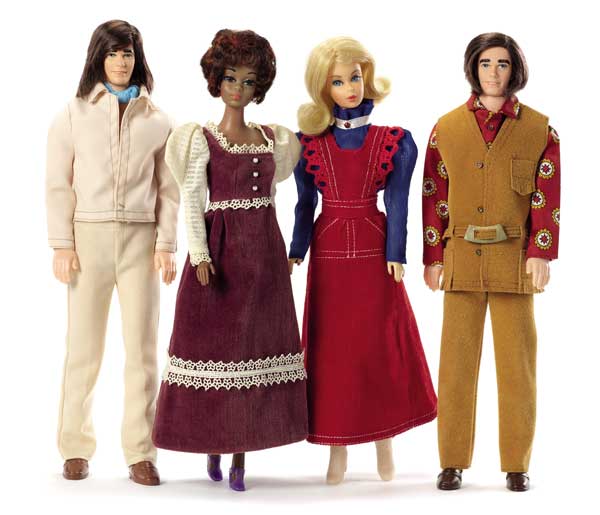 Mattel
Mattel
Early in 1959, Ruth Handler recruited Charlotte to work on her top secret doll project, and she ultimately played an integral role in Barbie’s look. Charlotte was inspired by the runways of Paris and New York, combining that chic aesthetic with the feeling of the California lifestyle to create the twenty-two fashions that comprised Barbie’s 1959 debut wardrobe. Charlotte knew the doll better than almost anyone—except, perhaps, Ruth Handler herself—and she was about to evaluate my designs.
My first memory of meeting her was that she was very tall and quite stylish. I felt good about my test designs, but in Charlotte’s hands, who could tell? I didn’t say a word as she turned the dolls over and over, closely examining every detail—not just the styles themselves but also the construction, the seaming, even the fabrics I had chosen. After what seemed like an eternity, Charlotte rendered her verdict: “I have no objection to hiring you,” she said, her words revealing no enthusiasm for my designs. And with that, she walked out of the room.
My first thought: What just happened? Then Jerry Fire was beside me again, escorting me to another room to take a personality and aptitude test, the final step to becoming a Mattel employee in those early years. Once that was complete, he was shaking my hand, a big smile on his face. It took me a moment to realize that I had passed both tests—Charlotte’s and Mattel’s—and had gotten the job. All of a sudden, I was smiling along with Jerry.
The rest of that day was like a dream in which I sort of floated along. I couldn’t stop grinning, because I had achieved exactly what that second ad had asked for: I was a fashion designer-stylist for Barbie.
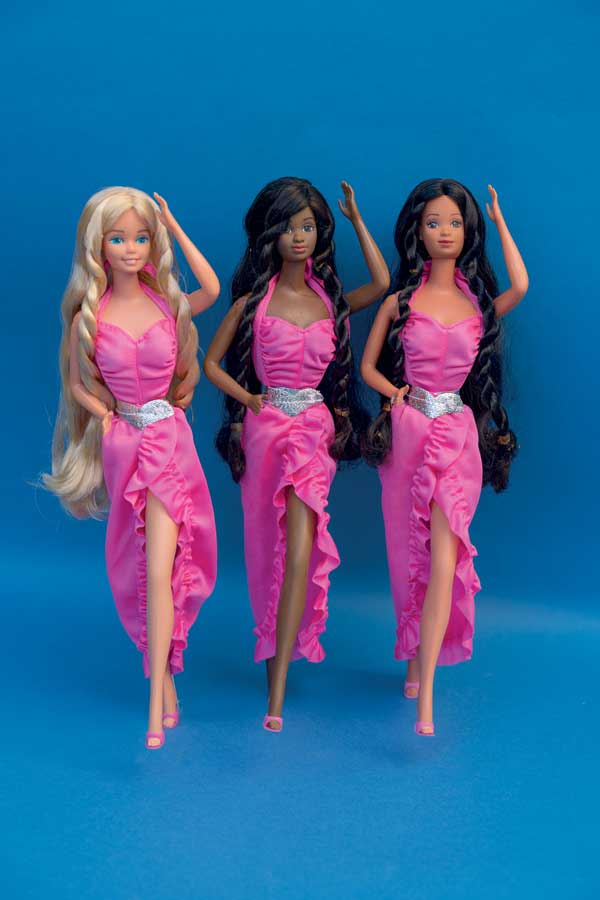 Mattel
Mattel
People talk about fate as an abstract idea, but in that moment, I fully embraced what it meant. The two advertisements I’d responded to had serendipitously asked me to come in and interview on the same day at the same time. How could that not be destiny?
__________________________________
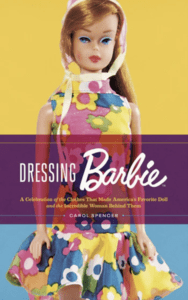
From the book DRESSING BARBIE by Carol Spencer. Copyright © 2023 by Carol Spencer. Reprinted courtesy of Harper, an imprint of HarperCollins Publishers.

